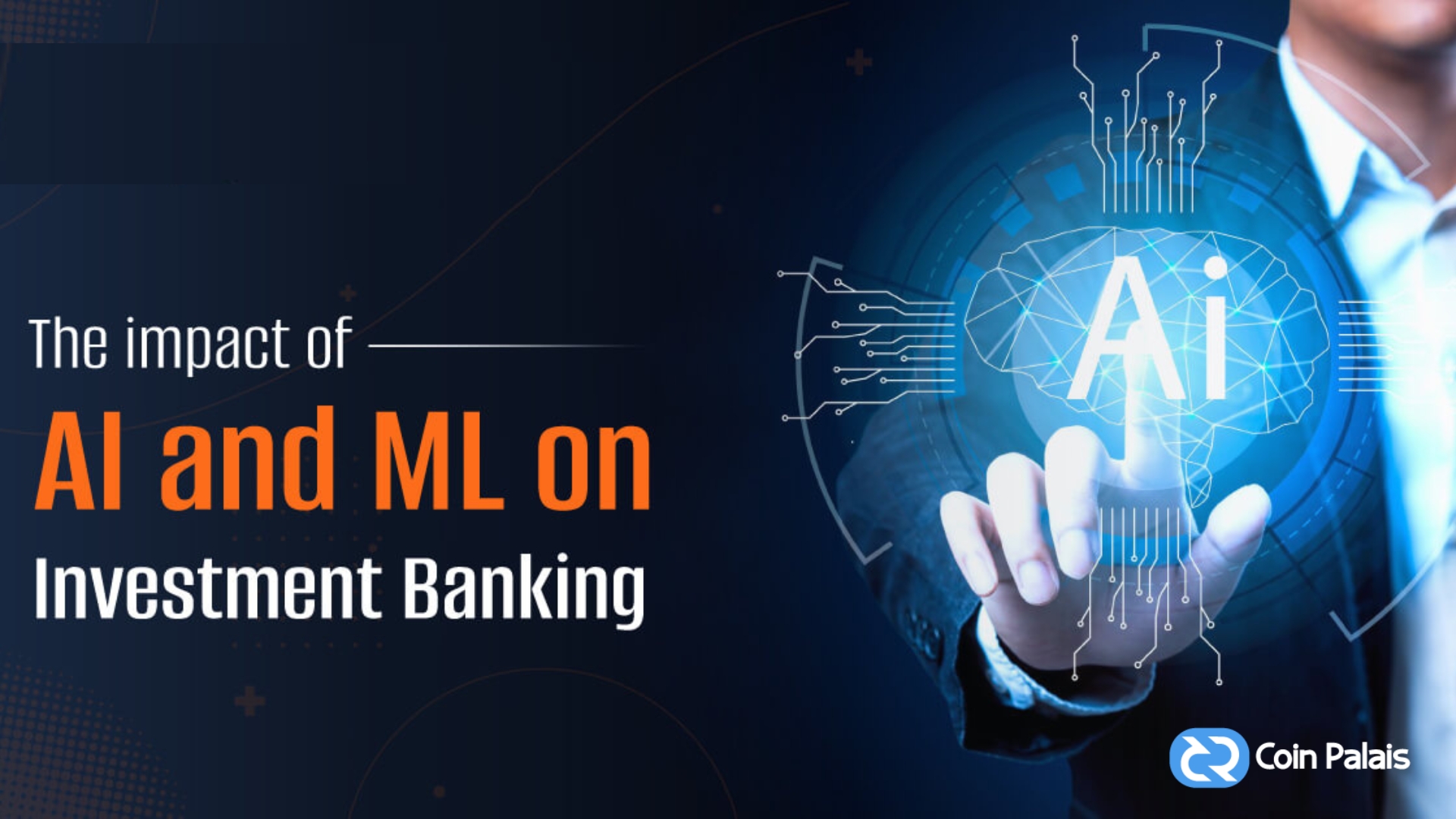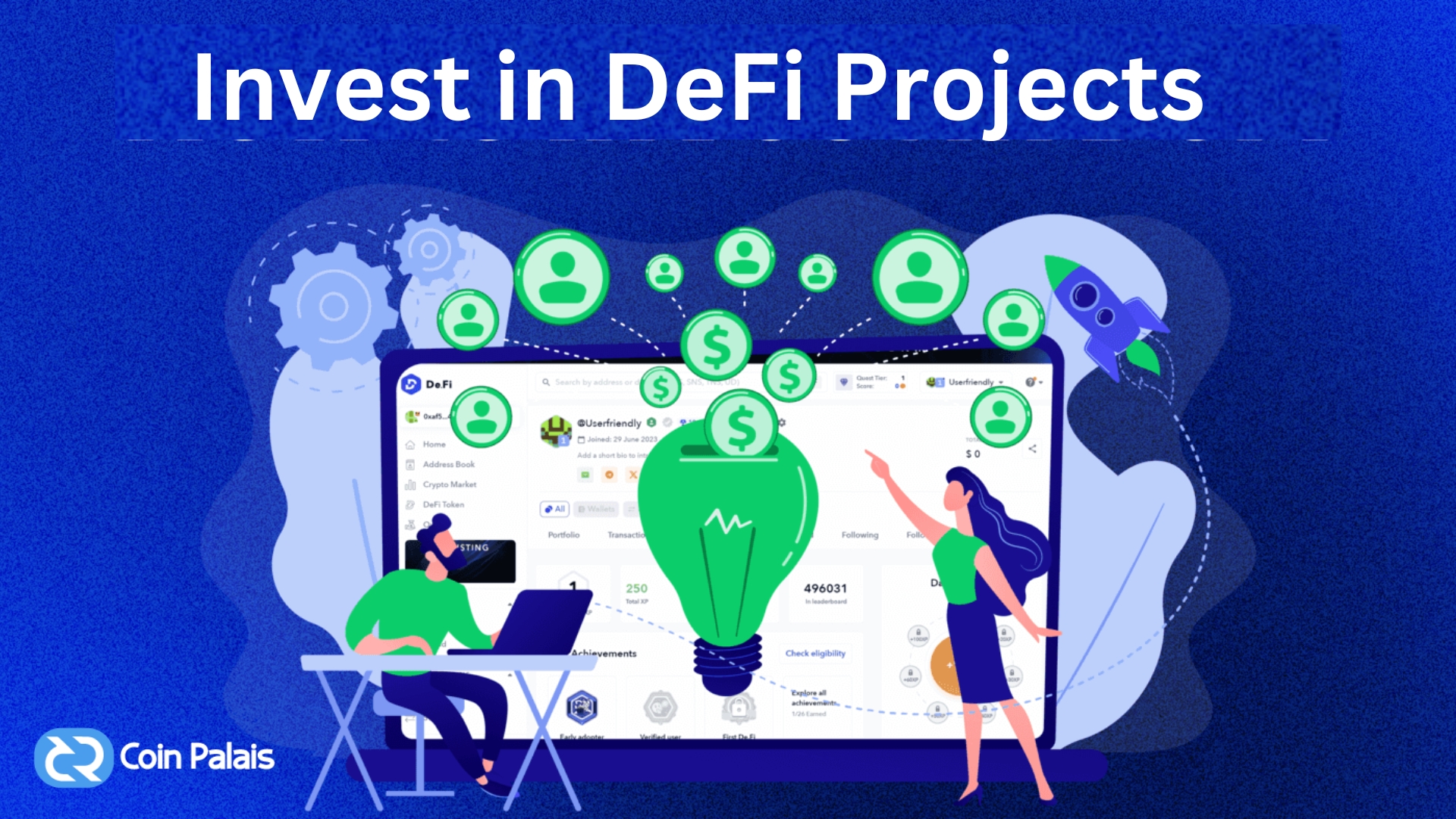AI and ML in Finance: Reimagining Banking and Investments

AI and ML in Finance: Reimagining Banking and Investments. Revolutionary shifts have occurred in many different sectors due to artificial intelligence. The use of AI and ML in financial applications has also been on the rise. By modelling human intelligence, AI can facilitate the development of intelligent machines capable of carrying out various tasks. To generate informed predictions or conclusions, it can analyze data using algorithms and learn from trends.
Thanks to developments in NLP and ML, AI has the potential to bring about value improvements in areas such as risk management, personalization, customer service, and fraud detection. Furthermore, worries about data privacy and laws have emerged in response to the increasing use of AI in the financial and investing sectors. We need to learn more about how AI is helping the financial sector and stock markets.
Impact of AI and ML in the Finance Services Industry
If we want to know, “What is the role of AI and ML in the banking sector?” the right way, we need to look into the transformative potential of AI and its basic implications. Various forms of AI have been discovered and usedin multiple industries as the field of AI keeps developing. Machine learning, computer vision, and natural language processing are just a few examples of artificial intelligence technologies that have the potential to revolutionize many different markets. In recent years, machine learning has become increasingly popular in the banking and finance sector.
Financing and banking businesses that use AI may be able to reap the rewards of more accurate fraud detection. In order to detect potential instances of fraud, computers driven by AI might sift through mountains of data. That way, banks and other financial organizations wouldn’t lose so much money, and their consumers wouldn’t either. Artificial intelligence has also become an important resource for risk management, especially in the assessment of credit risk. To aid AI in making reliable credit risk assessments, analysing data linked to credit history and other criteria may be necessary. Consequently, banks may base their lending decisions on data.
The use of AI and ML in the financial sector has already begun to have an effect, and this bodes well for the future of banking and investing client service. Virtual assistants and chatbots driven by AI, for instance, could facilitate the provision of quicker and more effective resolutions to consumer issues. Artificial intelligence can potentially revolutionize the banking and financial services sector by ensuring the delivery of tailored solutions.
How Will AI and ML Transform the Banking and Investments Sector?

Machine learning and artificial intelligence have the potential to revolutionize the financial sector for over ten years. Automating routine, low-level activities was the primary goal of early AI and ML implementations in the financial sector. In recent years, artificial intelligence (AI) has emerged as a valuable tool for advanced data interpretation and predictive analytics.
AI and ML have increased operational efficiency and enhanced client experiences at major financial institutions like Wells Fargo, Bank of America, and JPMorgan Chase. To illustrate the influence of AI and ML on the banking and financial services sector, we will look at a few key points.
Better Customer Experiences
Guides to the future of artificial intelligence in banking all agree that enhancing the client experience is a top priority. Hyper-personalization of financial services could be possible with the use of AI and ML to analyze large amounts of consumer data. Customized product suggestions and financial guidance could be provided with a better grasp of consumer habits, spending habits, and economic objectives. Improving the banking experience is possible through tailored services to meet the demands and preferences of clients. This would allow banks to foster long-term connections with their customers and see increased consumer satisfaction.
Moreover, biometric recognition technologies directly result from AI’s influence on the banking industry’s ability to provide superior customer experiences. The safety of online banking has been enhanced by combining AI with biometric technology like face recognition and fingerprint scanning. By implementing a safe and easy authentication method, biometric recognition systems can lessen the likelihood of identity theft. The banking and finance industries stand to benefit greatly from its potential to enhance customers’ experiences while assuring their safety.
Chatbots and virtual assistants are another potential way that AI and ML are improving banking customer experiences. Artificial intelligence and machine learning-powered chatbots could provide timely, personalized assistance at any hour of the day or night. Moreover, chatbots and virtual assistants could utilize machine learning to perform basic tasks while interacting with users in real-time. This would allow banks to free up human customer support representatives to focus on other areas where they are most needed.
Improved Automation and Efficiency
Reviewing the impact of AI and ML on the financial sector would also highlight the need for more efficient and automated processes. Businesses in the banking and investments industry could gain a competitive edge by automating regular processes with AI and ML. A few examples of mundane but potentially useful applications of AI and ML include the automation of account setup, data entry, report preparation, and credit rating. With the help of AI, such processes could be mechanized, leading to greater efficiency and fewer mistakes. Furthermore, it can also assist financial institution staff in devoting their attention to more critical and intricate jobs.
Quicker credit determinations are just one more huge perk of AI-driven automation and efficiency in the financial sector. Because it requires a human examination of the applicant’s income, credit score, and financial history, the conventional method of obtaining credit decisions is exceedingly sluggish. By quickly analyzing financial data, previous transactions, and other factors, AI and ML could aid in the acceleration of the credit assessment process. Using AI and ML for credit scoring not only makes it faster but also makes it more accurate. Therefore, AI and ML could be useful tools for financial firms to prevent credit problems.
Safeguards against Fraud
The banking and insurance industries have been hit hard by various forms of fraud. More and more businesses are turning to AI and ML for financial services, which could lead to improved fraud protection. In order to detect suspicious trends that might suggest fraudulent conduct, AI systems could aid in the ongoing monitoring and analysis of transactions.
For instance, AI systems are able to identify transactions that occur frequently within a specific window, transactions that occur in big quantities for no apparent reason, and transactions that originate from unusual places. If these irregularities can be quickly, accurately, and effectively identified, financial institutions like banks will be able to take preventative measures.
The promise of real-time fraud prevention is another encouraging benefit of using AI and ML in financial institutions. When asked, “What is the role of AI and ML in the banking sector?” the responses would highlight how conventional methods of detecting fraud have their limits. After a fraudulent action has caused damage, the bank or consumer is typically notified by the traditional systems. Contrarily, anomalies could be detected and reported in real-time by fraud detection systems powered by AI. Artificial intelligence systems would momentarily halt the transaction in addition to flagging it as fraudulent. In addition, the systems would promptly notify the customer and banks of the transaction, mitigating the effects of any fraud.
How Have Organizations Embraced AI and ML in the Finance Industry?
The influence of AI on the banking industry foretells the future of AI and ML for banks and other financial organizations. I bet you’re wondering how far along the path to full AI and ML adoption the financial services industry is. The fascinating thing is that you can learn a lot about the potential of AI and ML to revolutionize the banking sector by looking at examples of successful AI applications in financial service firms and banks.
When it comes to banks that have used AI, JP Morgan is among the most prominent names. It has used AI for a variety of tasks, including managing risks, detecting fraud, and providing customer care. Using machine learning, JP Morgan’s Contract Intelligence technology can glean information from contracts and other legal documents. The outcome might be less need for human intervention during processing, which in turn would save time and energy.
In addition to other leading examples, Bank of America provides an intriguing use case for artificial intelligence in banking. With the use of chatbots powered by artificial intelligence, the leading financial institution has enhanced its customer care operations. Chatbots powered by artificial intelligence assist Bank of America with answering common client questions. Because of this, the bank has been able to redirect its employees’ attention to more difficult issues. Consequently, Bank of America has improved customer satisfaction and provided speedier response times.
Along with Capital One, Citigroup is another example of a financial organization recognising the benefits of AI and machine learning. The use of artificial intelligence (AI) in credit assessment has allowed Citigroup to make quicker and more accurate credit decisions. Contrarily, Capital One has used AI to provide clients with tailored investment suggestions based on their past transactions.
Future of AI and ML in the Banking and Investment Sector

The future of AI in banking has also been one of the notable topics of discussion regarding the implications of AI and ML for financial institutions. You can expect the following trends in the effect of AI and ML on finance.
AI-powered Financial Planning
In the future, financial planning will be the main focus of AI and ML applications for the banking industry. Through thoroughly examining many data points, AI could assist clients and businesses in making wise financial decisions. Personalized investment recommendations may be generated with an efficient evaluation of factors, including income, expenses, savings, and investing tendencies. With more accessible access to financial planning, it could revolutionize the management of finances.
Challenges of Regulations and Ethics
Regarding artificial intelligence and machine learning, financial planning is where the industry is headed. Artificial intelligence (AI) has the potential to assist businesses and consumers with thorough financial planning by analyzing a variety of data inputs. To provide tailored investment recommendations, it is necessary to accurately evaluate factors including income, expenditures, investment habits, and savings. It has the potential to facilitate a paradigm shift in financial management by making financial planning more accessible.
Integration with Blockchain and New Technologies
One obvious way that AI and ML could revolutionize the financial services industry is by opening up new avenues for technological integration. One possible extra safeguard is blockchain technology, which eliminates the possibility of data tampering. Organizations in the financial sector could potentially enhance their productivity, customer experience, and overall performance by integrating AI systems with new technologies like 5G and the Internet of Things (IoT).
Advanced Predictive Analytics
The primary focus of artificial intelligence’s influence on the banking sector is the analytics value it provides. The emergence of advanced predictive analytics can be attributed to the increasing sophistication of machine learning models. It can potentially enhance customer-specific financial products and advise customisation and risk management.
Conclusion
The various applications of AI and machine learning in the financial sector are illustrated by the ways in which they are transforming the industry. Adding a personal touch to financial services would make them more accessible to customers. The advantages of security were available to customers, and they could also get individualized financial solutions and assistance. Now is the time to find out how AI and ML can revolutionize other sectors of the economy.




